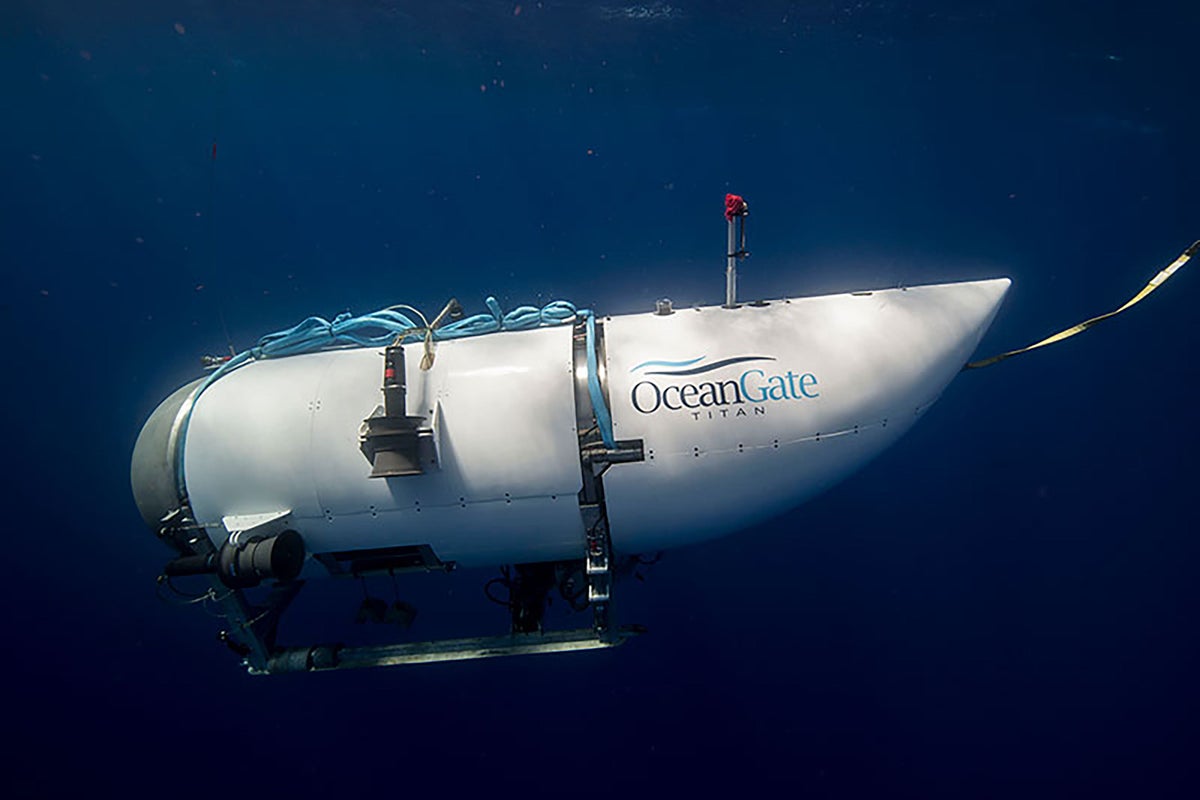
The search for the missing Titan submersible fully captured the world’s attention, from reports of mysterious “banging” noises to estimates of how much oxygen may have been left in the underwater vessel.
On 18 June, the OceanGate Expeditions submersible Titan was beginning its trip to visit the Titanic wreckage at a depth of 12,500ft. About one hour and 45 minutes into its deep dive, the submersible lost communications with its surface ship, the Polar Prince, and was believed to have suffered a “catastrophic implosion”.
Aboard the Titan were CEO and founder of OceanGate Expeditions Stockton Rush, British billionaire explorer Hamish Harding, renowned French diver Paul-Henri Nargeolet and Pakistani businessman Shahzada Dawood and his 19-year-old son Suleman Dawood.
Follow the latest updates on the missing Titanic submarine here
On 22 June, it was announced that debris was discovered near the site of the Titanic shipwreck – the first possible sign of the Titan submersible since it vanished.
Later, OceanGate said it believed the passengers of the Titanic-bound submersible have “sadly been lost”. The US Coast Guard said officials were still working through a timeline of the submersible’s failure.
The search for the submersible captured the attention of millions, as phrases such as “Titan” and hashtags like #OceanGate dominated Twitter’s top trending and TikTok For You Pages. According to Dr Justin D’Arienzo – a clinical psychologist in Jacksonville, Florida and former US Navy psychologist – the reason the public has been so invested is down to our desire to relate to others that sustains our obsession.
“We all can relate to that feeling of being trapped somewhere or being in the water or experiencing that level of uncertainty,” he tells The Independent. “What makes it so relatable is that we all could imagine being helpless with other humans and not know what to do.”
Of course, many people would argue the opposite. OceanGate Inc, the company that owns and operates OceanGate Expeditions, offers people the chance to join a crew in a five-person submersible for the price of $250,000 – a number that very few people have just lying around.
On the RMS Titanic, which famously sank in 1912 after it struck an iceberg, some passengers paid up to £870 pounds for a first-class cabin, which is £105,000 or over $130,000 today. Much like the Titan submersible, access to the RMS Titanic was in many cases granted to those for a hefty price.
“People paying $250,000 to go into a tube that’s going to go underwater, there is some obsession with rich and famous people. We’re sensitized to voyeurism in that regard,” says D’Arienzo. “We quickly follow people who we see are powerful; we give them more leeway. There’s a reason that we follow the lifestyles of the rich and famous.”
It’s the rich and famous who’ve recently ventured into uncharted territory too, such as space. In 2021, Amazon founder and billionaire Jeff Bezos flew into space with a rocket his company Blue Origin built. Sir Richard Branson’s space tourism company Virgin Galactic will launch its first commercial flight this summer, with seats starting at $450,000 (£352,000) per person.
Ellen Langer, a Harvard psychologist who specializes in social cognition and decision-making, told Insider that one reason they’re willing to spend so much money, just to be put in great danger, is to break free from the mundanity of their everyday lives. And the reason why some people sign on to high-risk travel, Dr D’Arienzo says, is because they believe the venture is almost too big to fail.
“We would not be on the moon, we would have not explored the ocean, we’d probably still be in Africa if there was no element of overconfidence and courage. I think that’s part of our nature to push,” he says. “But then we hear stories of people that have an extreme element of that trait, where they are very courageous, overly confident.”
“I think what happened here was a fallacy of overconfidence, or the confidence bias, where humans feel like things that are complex and run by rich and smart people are too big to fail.”
When it launched in April 1912, the Titanic was deemed the largest ship in the world at 882 feet long and 92 feet wide, perhaps also considered “too big to fail”.
Many people have since pointed to the undeniable mystery and force of the sea amid the Titan disaster. Scientific research has helped us better understand the elaborate nature of the ocean, but still much of it is unknown.
Now, the search for the Titan submersible has delivered catastrophic results. And while relatability may have aided our fixation on the Titan submersible, it’s hard to ignore that both wealth and the unfathomable power of the ocean are the same two factors that led to the defeat of both vessels.




!["[T]he First and Fifth Amendments Require ICE to Provide Information About the Whereabouts of a Detained Person"](https://images.inkl.com/s3/publisher/cover/212/reason-cover.png?w=600)


